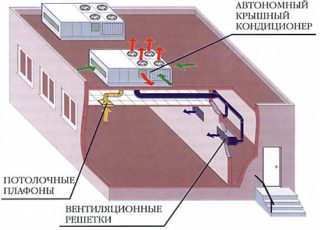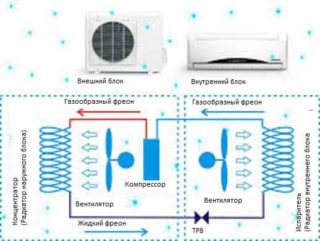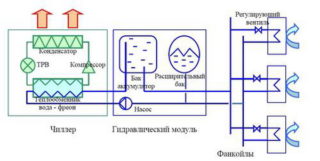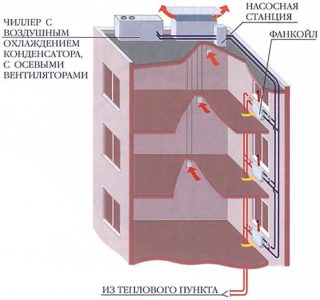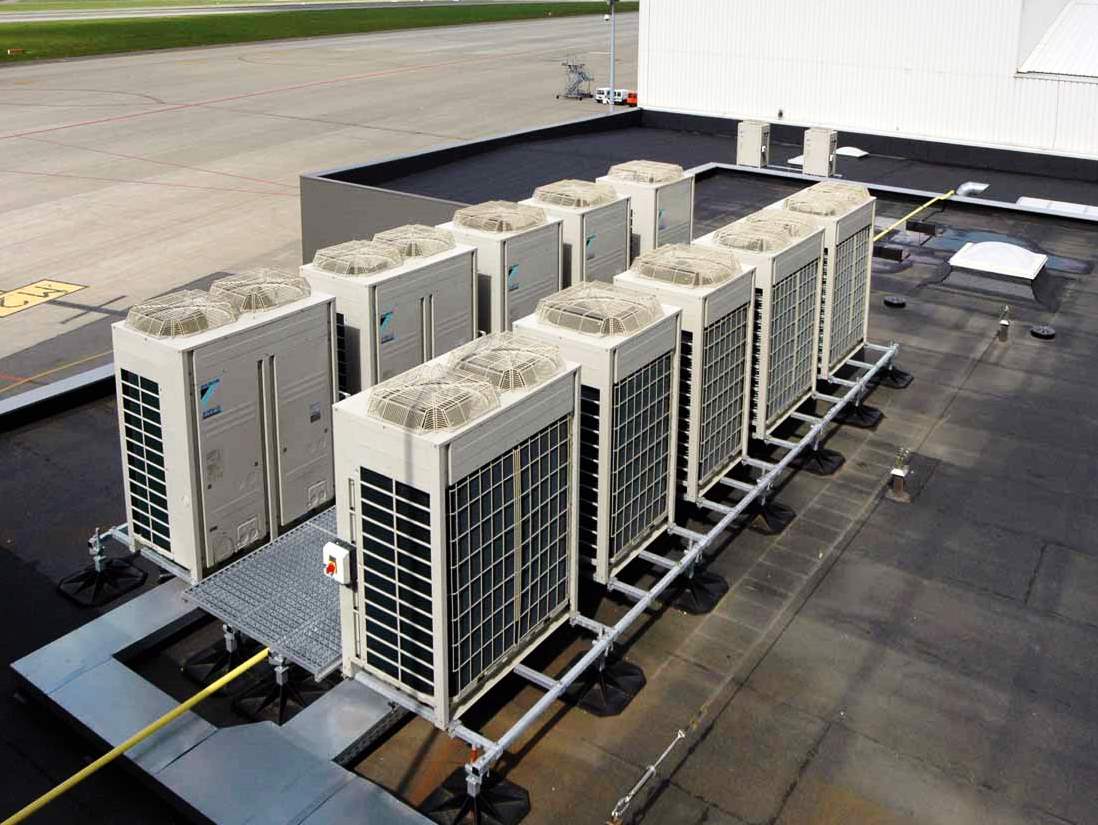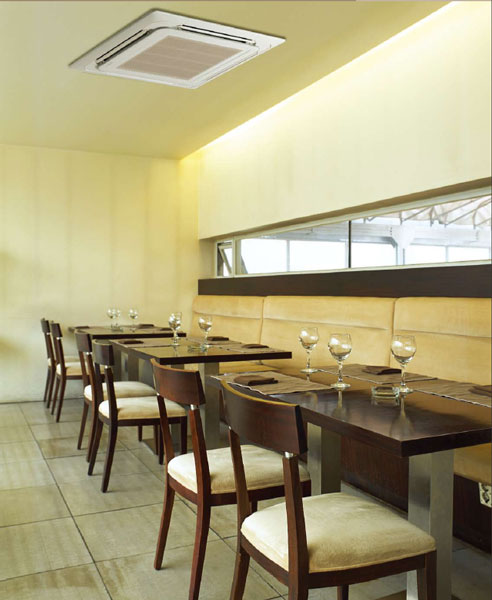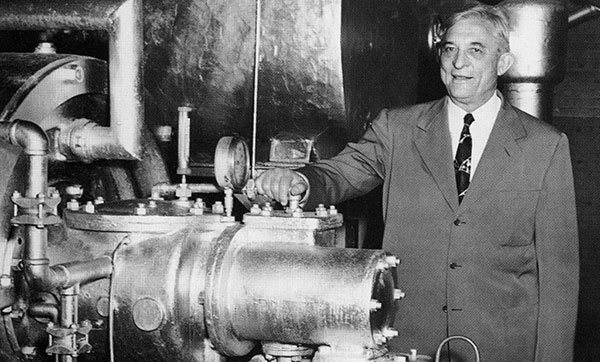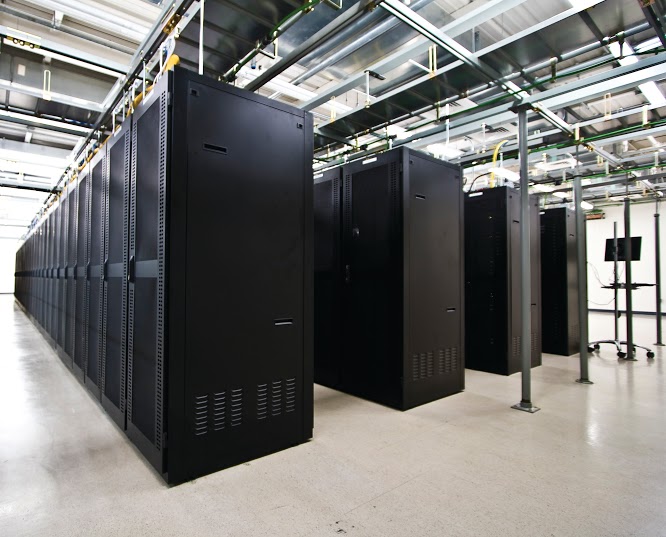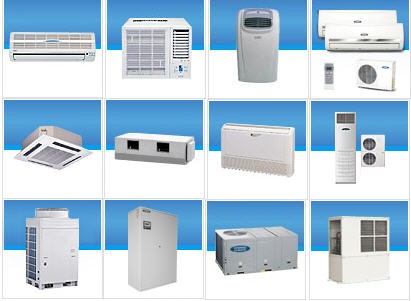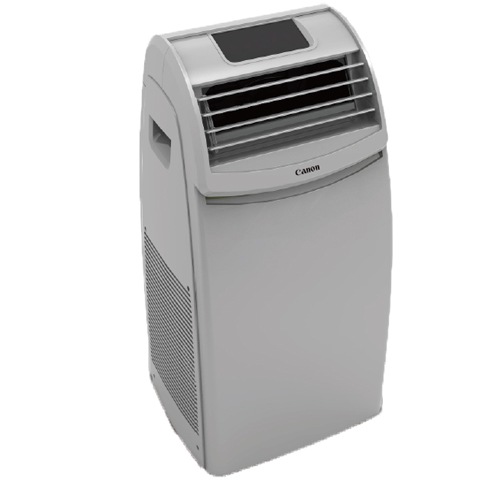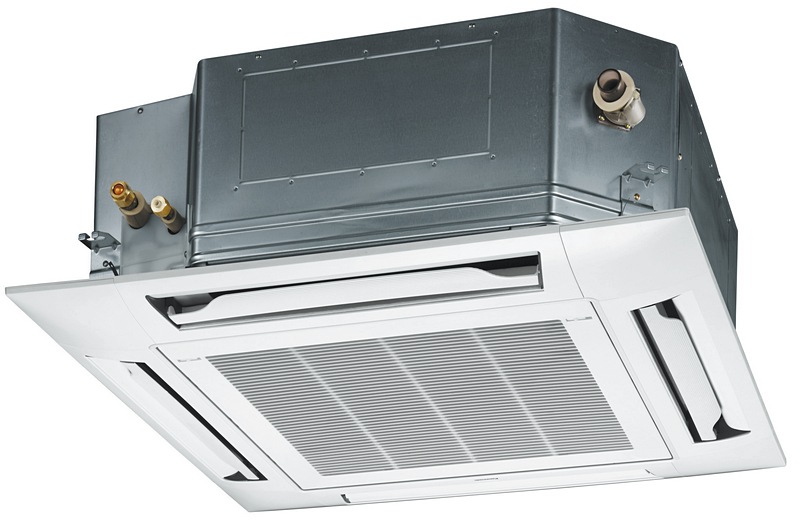The attention of the buyer is focused not only on the assortment and quality of the goods, but also on the conditions of the microclimate of the retail space. To stay comfortable, the air must be clean, not too cold or hot. It is important to make sure that the money spent on the ventilation system of a store or shopping center is not in vain.
- Requirements for air conditioning systems
- Types of climate systems for shopping centers
- Air conditioning of the shopping center with split systems
- Using multi-split systems
- Boutique air conditioning
- Microclimate of small sales areas
- Air conditioning and ventilation of multifunctional shopping centers
- Saving on HVAC equipment for the developer
Requirements for air conditioning systems
Often the role of a ventilation unit in a shopping center is played by a rooftop air conditioner (rooftop). It differs from the air supply unit in that it is equipped with a monoblock refrigeration machine. A rooftop air conditioner is capable of taking air from a room and then cooling or heating it and supplying it back.
In the "rooftop" fresh street air is added to the treated air. Their volume is calculated based on sanitary standards:
- 20 m3 / h for each visitor.
- 60 m3 / h for one employee of the shopping center.
The total volume of gas (80 m3 / h) is discharged from the premises to the street, which allows maintaining the balance of air masses.
In summer, the rooftop air conditioner cools the air thanks to the freon circuit, and in winter it heats it with a gas or water heater.
Often, instead of rooftop air conditioners, supply ventilation with a section of water cooling and heating is installed. To heat the premises, hot water (90-130 degrees) is supplied to the heating section from the boiler room. The cooled liquid (7 degrees) is transported from the refrigeration machine.
Types of climate systems for shopping centers
Among the common types of air conditioning in shopping centers, there are split systems, multi-split systems, chiller-fan coil systems.
Air conditioning of the shopping center with split systems
Split systems are applicable for budget shopping centers that have been converted from public buildings. Their common use is air conditioning in a boutique located on the ground floor of a residential building.
The advantages of air conditioning with split systems:
- Low cost.
- The independence of the equipment from other owners, which allows you to maintain the optimal room temperature around the clock. This condition is especially important for grocery stores.
- The possibility of heating the premises up to +10 - +15 degrees, while maintaining a comfortable temperature in the off-season.
- Availability of additional functions - filtration, air ionization.
These advantages of using split systems make them popular when equipping inexpensive shopping centers.
Using multi-split systems
Many indoor units are connected to one external one, which allows you not to install a lot of unnecessary modules on the facade. There are 5-6 indoor units for one outdoor unit.
This solution is suitable for cases where the indoor and outdoor units are installed at a great distance from each other. If for a standard split-system there is a limit on the length of the track of 15-20 m, then for a multi-split this figure can reach 80-100 m.
Boutique air conditioning
Air ducts are installed above the room. They cut into the suspended ceiling at the installation points of the ventilation grilles. Air ducts for supply and exhaust are also located in the inter-ceiling space.
Microclimate of small sales areas
The air conditioning system in the grocery store is selected taking into account many conditions - the number of refrigerators, the volume of the premises, the number of employees, attendance, etc. Since the bulk of perishable food is placed in refrigeration units and freezers, it will not be possible to select air conditioners according to standard characteristics. It is important to take into account the heat generated by each refrigeration unit.
The ventilation of the industrial goods store provides the minimum necessary one-time exhaust of air masses from the retail space. This means that the system in one hour must throw out the volume of air that is contained in the hall onto the street.
The capacity of the system for industrial stores is calculated based on the maximum number of visitors, floor space, window placement, heat dissipation of appliances, and other factors.
Air conditioning and ventilation of multifunctional shopping centers
The classic system for multifunctional shopping centers is supply ventilation equipped with a cooling section. Air is supplied to all rooms in accordance with sanitary standards. The cooling section does not allow hot air from outside to enter the room. The hood removes air from bathrooms, kitchens and tenants' premises.
Chiller-fan coil units are used for air conditioning of multifunctional shopping centers. The chiller prepares cold water and transports it to the fan coil units through pipes. The latter raise the temperature of the liquid to the specified one in each room.
At the stage of construction of modern multifunctional shopping centers, only basic equipment is installed and trunk communication networks are laid. Tenants install air ducts and grilles, fan coil units, etc. in their premises.
For air conditioning of small retail premises of the shopping center, tenants are provided with cold water connection points.
Saving on HVAC equipment for the developer
When installing air conditioning systems in shopping centers, the shell & core scheme is gaining popularity. This is the state of the premises "for finishing", when only the main equipment is installed.
The advantages of the shell & core scheme:
- Save 10% on electricity for air conditioners compared to chiller-fan coil units.
- Reducing the cost of the air conditioning system by up to 30%.
Europeans call this system "stand-alone chillers for a water loop system." Instead of fan coil units, each tenant installs an autonomous water-cooled mini-chiller in his premises. It contains a compressor with a freon circuit. The minichiller is supplied with water at street temperature. The air is cooled by a freon circuit, and the heat from the room is transferred to the water.
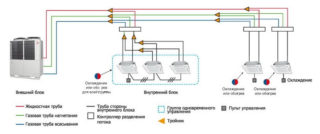
In shopping centers, an individual or typical air conditioning project is used. Typical systems are operated on the basis of a chiller-fan coil unit. This system is suitable for single and multi-level buildings.If it is necessary to provide multi-zone air conditioning, an individual project is created. Split systems, VRV and VRF schemes are used for this task. As a result of their installation, each tenant can regulate the air flow in his premises.

